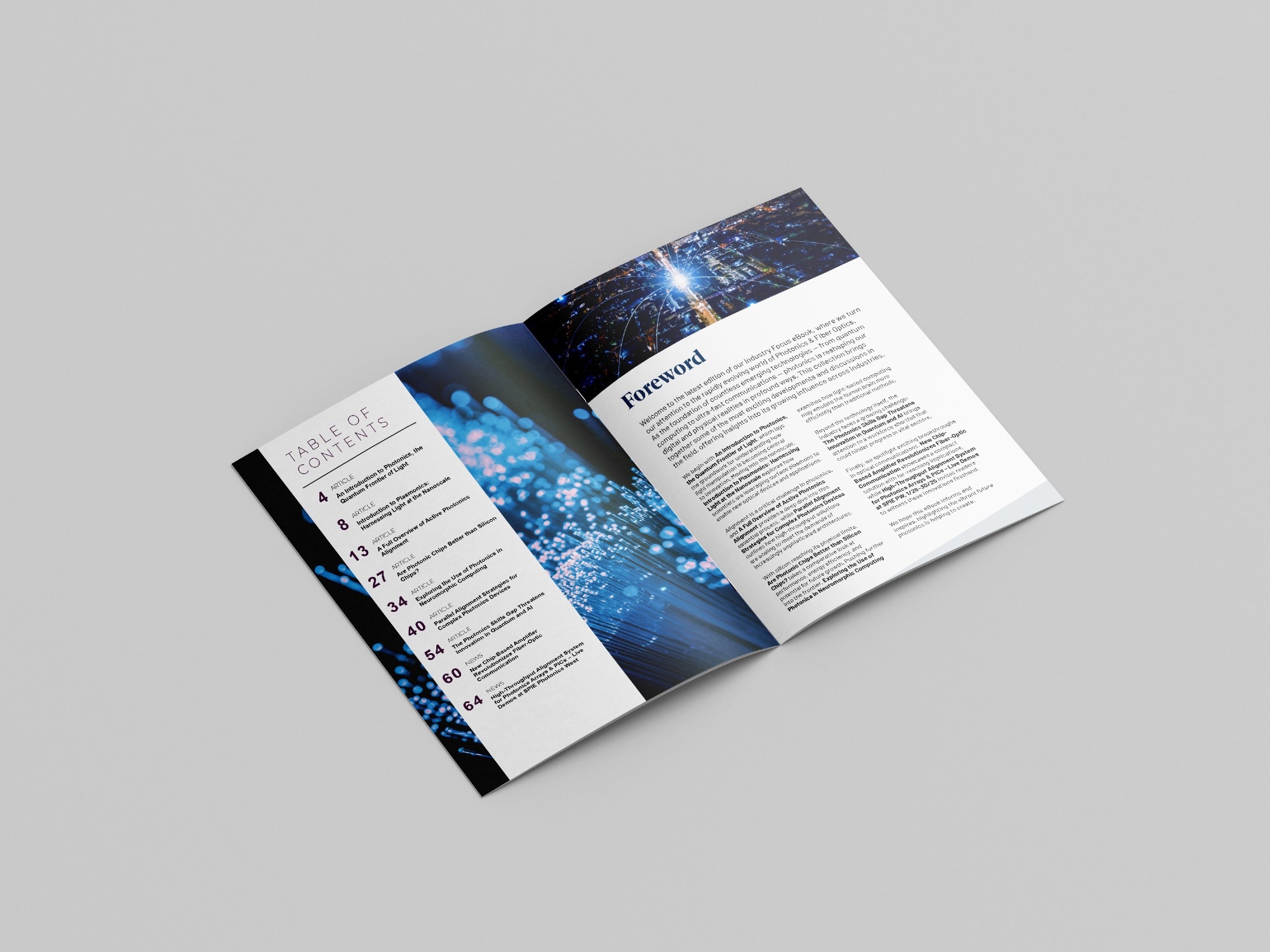Photonics and fiber optics are powering some of the biggest leaps in AI, quantum computing, and high-speed communications, and the tools driving those advances are getting smaller, faster, and more precise. From neuromorphic chips to nanoscale alignment systems, the tech is evolving fast, and so is the demand for accuracy and integration.
In our new Photonics & Fiber Optics Industry Focus eBook, created in partnership with Physik Instrumente (PI), we’ve gathered expert insights, technical highlights, and real-world use cases that reflect where the field is heading, and how photonics is shaping the future of computing, sensing, and manufacturing.
Inside, you’ll find:
- Updates on ultra-fast tunable lasers, optical switching, and chip-to-chip communication
- A deep dive into neuromorphic photonics and how it’s redefining AI acceleration
- How high-speed active alignment systems are enabling higher throughput in photonics wafer testing, and chip assembly.
- Industry perspectives on high-precision motion control and nanopositioning
- The latest trends in silicon photonics, quantum interconnects, and fiber optic sensing
Download the full eBook now

The eBook takes a closer look at the engineering breakthroughs behind advanced photonic systems, like how real-time active alignment is solving key challenges in packaging, and how integrated systems are shrinking the footprint of precision optics without sacrificing performance.
It also explores how photonics is intersecting with fields like AI and quantum tech, including efforts to build photonic neural networks and low-loss optical components for quantum data links.
Whether you’re working in chip design, fiber networks, optical sensing, or emerging areas like neuromorphic computing, this eBook offers a snapshot of where things are going – and what’s needed to get there.
Download your copy and explore the tools, trends, and technologies driving next-gen photonics.
Download your free copy of the full eBook now!


This information has been sourced, reviewed and adapted from materials provided by PI (Physik Instrumente) LP.
For more information on this source, please visit PI (Physik Instrumente) LP.